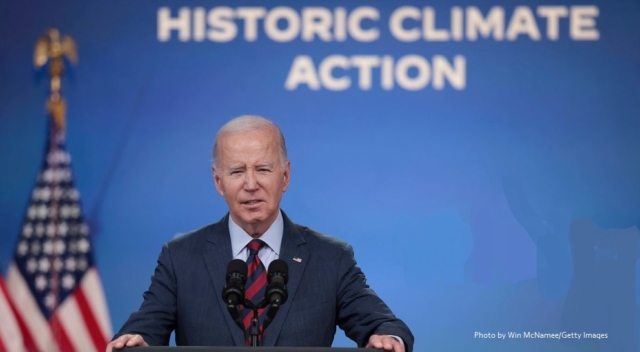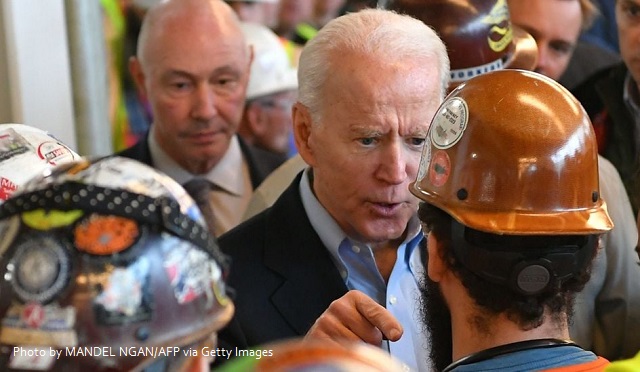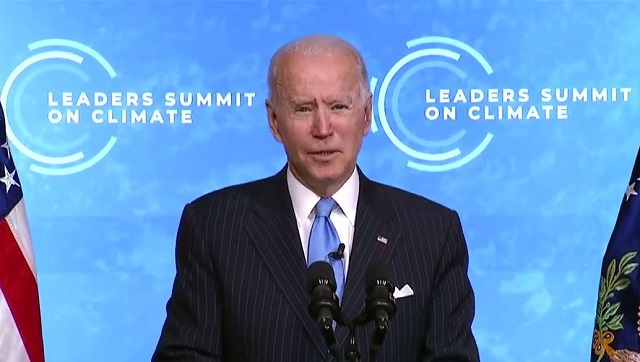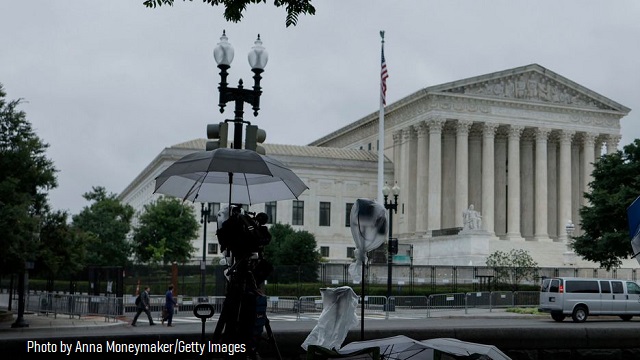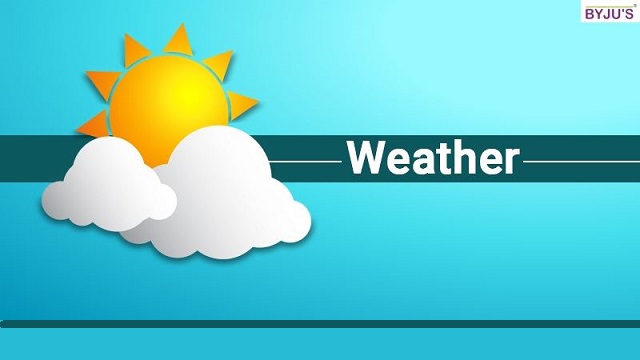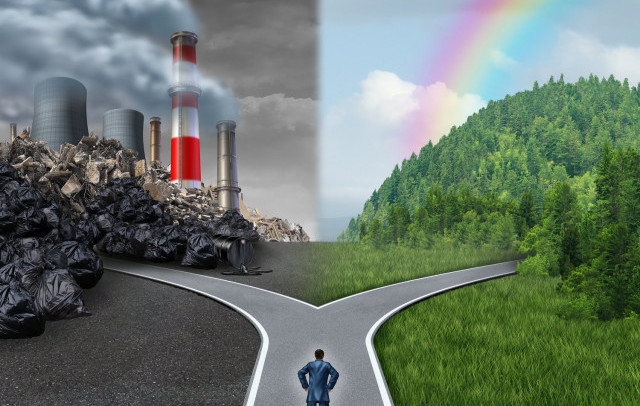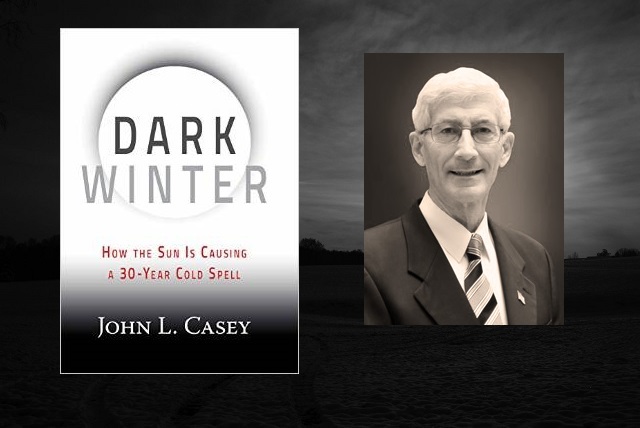Authority versus Science in the Climate Change Debate.
When it comes to the climate change debate, many of the loudest voices are confidently making assertions that are not backed up by the actual evidence — and in this respect, they are behaving very unscientifically.
One obvious sign that many people in the climate change debate are appealing to emotions rather than facts is their reliance on pejorative terminology. For example, rather than make an informative statement that they support subsidies for wind and solar, and taxes on coal and oil, they may instead say they support “clean energy” while their opponents favor “dirty energy.”
The coup de grâce, of course, occurs when partisans in the debate refer to their opponents as “climate deniers.” This is a nonsensical slur that would have impressed Orwell. Obviously, nobody denies climate. Furthermore, nobody denies that the climate is changing. And, when it comes to the serious debate among published climate scientists, people on both sides agree that human activities are contributing to warmer temperatures; the dispute is simply overhow much. (Those who think the change is mild have embraced the label “lukewarmers.”)
To label critics of a carbon tax or EPA regulations on power plants as “climate deniers” is utterly destructive of rational inquiry and tries to link legitimate skepticism to Holocaust denial. Those who use this term without irony demonstrate that they have no interest in scientific discovery.
Related to this lack of nuance, and the appeal to an exaggerated consensus, is the oft-repeated claim that “97 percent of climate scientists agree” on the state of human-generated climate change. Physicist-turned-economist David Friedman (among others) has investigated the methods used to generate such claims, and finds that they are seriously lacking.
Using the very data (on abstracts from published papers) that forms the basis of these headline announcements, Friedman reckons that more like 1.6 percent of the surveyed papers explicitly endorse humans as the main cause of global warming since the 1800s. Friedman further argues that this confusion — where the actual findings of the paper ended up being misinterpreted by the media — appears to have been deliberately produced by the survey’s authors.
“Hottest Year on Record” and “the Pause”
A January 2016 New York Times article epitomizes the advocacy disguised as reporting in the climate change debate. The very title lets you know that a serious case of scientism is coming, for it announces, “2015 Was Hottest Year in Historical Record, Scientists Say.”
Now, we must inquire, what is the purpose of adding “Scientists Say” at the end? Does any reader think that the Times would be quoting plumbers or accountants on whether 2015 was the hottest year on record? The obvious purpose is to contrast what scientists say about global warming with what thosenonscientist deniers are saying. The article goes on to let us know exactly what “the scientists” think about global warming and manmade activities:
Scientists started predicting a global temperature record months ago, in part because an El Niño weather pattern, one of the largest in a century, is releasing an immense amount of heat from the Pacific Ocean into the atmosphere. But the bulk of the record-setting heat, they say, is a consequence of the long-term planetary warming caused by human emissions of greenhouse gases.
“The whole system is warming up, relentlessly,” said Gerald A. Meehl, a scientist at the National Center for Atmospheric Research in Boulder, Colo.
It will take a few more years to know for certain, but the back-to-back records of 2014 and 2015 may have put the world back onto a trajectory of rapid global warming, after a period of relatively slow warming dating to the last powerful El Niño, in 1998.
Politicians attempting to claim that greenhouse gases are not a problem seized on that slow period to argue that “global warming stopped in 1998,” with these claims and similar statements reappearing recently on the Republican presidential campaign trail.
Statistical analysis suggested all along that the claims were false, and that the slowdown was, at most, a minor blip in an inexorable trend, perhaps caused by a temporary increase in the absorption of heat by the Pacific Ocean.
This excerpt is quite fascinating. We have something reported as undeniable fact when it actually relies on assumptions of what might happen in the future (“may have put the world back onto a trajectory of rapid global warming”) and offers conjectures to explain why the measured warming suddenly slowed down (“perhaps caused by a temporary increase in the absorption of heat”).
The “statistical analysis” did not establish that the critics’ claims were false. It is undeniably true that the official NASA GISS records showed, for example, that the average annual global temperature in 2008 was lower than the annual temperature in 1998, and that’s why people at the time were saying, “There has been no global warming in the last ten years.”
Here is a NASA-affiliated scientist arguing that such claims are misleading, and perhaps they were, but it is similarly misleading to turn around and claim that the pause didn’t exist.
If you asked a bunch of Americans whether they gained weight over the last 10 years, their natural interpretation of that question would be, “Do I weigh morenow than I weighed 10 years ago?” They wouldn’t think it involved construction of moving averages since birth. In that sense, the people referring to the pause were not acting dishonestly; they were pointing out to the public a fact about the temperature record that would definitely be news to them, in light of the rhetoric of runaway climate change.
However, the more substantive point here is that the popular climate models predicted much more warming than has in fact occurred. In other words, the question isn’t whether the 2000s were warmer than the 1990s. Rather, the issue is given how much concentrations of greenhouse gases have risen, is the actualtemperature trend consistent with the predicted temperature trend?
To answer this, consider a December 2015 Cato Institute working paper from two climate scientists, Pat Michaels and Paul Knappenberger: “Climate Models and Climate Reality: A Closer Look at a Luke warming World.” They avoid the accusation of cherry-picking by running through trend lengths of varying durations, and they compare 108 model runs with the various data sets on observed temperatures. They conclude, “During all periods from 10 years (2006–2015) to 65 (1951–2015) years in length, the observed temperature trend lies in the lower half of the collection of climate model simulations, and for several periods it lies very close (or even below) the 2.5th percentile of all the model runs.”
Thus we see that the critics arguing about the model projections aren’t simply picking the very warm 1998 as a starting point in order to game the results. The standard models produced warming projections well above what has happened in reality, and for some periods the observed warming was so low (relative to the prediction) that there is less than a 2.5 percent chance that this could be explained by natural volatility. This is the sense in which the current suite of climate models is on the verge of being “rejected” in the statistician’s sense.
To be sure, I am not a climate scientist, and others would no doubt dispute the interpretation of the data that Michaels and Knappenberger give. My point is to show how utterly misleading the New York Times piece is when it leads readers to believe that “scientists” were never troubled by lackluster warming and that only politicians were trying to confuse the public on the matter.
Climate Economists Don’t Believe Their Models?
Finally, consider a December 2015 Vox piece with the title, “Economists Agree: Economic Models Underestimate Climate Change.” Furthermore, the URL for this piece contains the phrase “economists-climate-consensus.” We see the same appeal to authority here as in the natural sciences when it comes to climate policy.
The Vox article refers to a survey of 365 economists who had published in the field of climate economics. Here is the takeaway: “Like scientists, economists agree that climate change is a serious threat and that immediate action is needed to address it” (emphasis added).
Yet, in several respects, the survey reveals facts at odds with the alarmist rhetoric the public hears on the issue. For example, one question asked, “During what time period do you believe the net effects of climate change will first have a negative impact on the global economy?” With President Obama and other important officials discussing the ravages of climate change (allegedly) before our very eyes, one might have expected the vast majority of the survey respondents to say that climate change is having a negative impact right now.
In fact, only 41 percent said that. Twenty-two percent thought the negative impact would be felt by 2025, while an additional 26 percent would only say climate change would have net negative economic effects by 2050. Would anyone have expected that result when reading Vox’s summary that immediate action is needed to address climate change?
To be clear, the Vox statement is not a lie; it can be justified by the responses on two of the other questions. Yet the actual views of these economists are much more nuanced than the pithy summary statements suggest.
Authority versus Science
On this particular survey, I personally encountered the height of absurdity in the context of scientism and appeal to authority. For years, in my capacity as an economist for the Institute for Energy Research, I have pointed out that the published results in the United Nations’ official “consensus” documents do not justify even a standard goal of limiting global warming to 2 degrees Celsius, let alone the over-the-top rhetoric of people like Paul Krugman.
In order to push back against my claim, economist Noah Smith pointed to the survey discussed earlier, proudly declaring, “Apparently most climate economists don’t believe their own models.” Thus we have reached the point where partisans on one side of a policy debate rely on surveys of what “the experts say,” in order to knock down the other side who rely on the published results of those very experts.
This is the epitome of elevating appeals to scientific authority over the underlying science itself.
In the climate change debate, legitimate disputes are transformed into a battle between Noble Seekers of Truth versus Unscientific Liars Who Hate Humanity. Time and again, references to “the consensus” are greatly exaggerated, while people pointing out enormous problems with the case for policy action are dismissed as “deniers.”
 Robert P. Murphy
Robert P. Murphy
Robert P. Murphy is research assistant professor with the Free Market Institute at Texas Tech University.
RELATED ARTICLE: College Professor Advocating Climate Change May Have Mismanaged Millions in Tax Dollars
